
Hey guys, this is Nikki Lead Veterinary Technician with Posh Dog Knee Braces. Today let’s talk about exercise in our cute little furry babies that we all love! Puppies are so cute, running around with those giant feet that don’t seem to match their bodies. Have you noticed how puppies tend to be very clumsy? Always falling over, tripping, slipping on hard surfaces? We think it is cute, but did you know there is a reason? Let’s talk about that today.
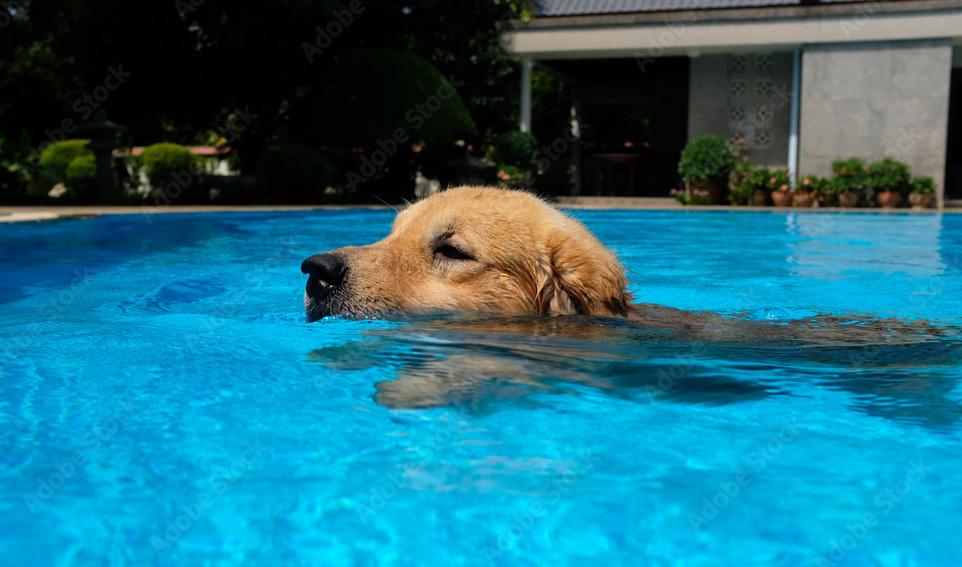
Did you know that a puppies bones do not even touch when you bring home that cute little 8 week old puppy? Their little joints are made of muscle, tendons, and ligaments with skin covering. Nothing is fitting tightly like a true socket. It can take 4-6 months for the joints to start developing, and 8 months and up for those growth plates to start to fuse. Some large breeds take 15+ months for their growth plates to finish. What does this mean?
This means that we have to be very careful as to not run a young dog excessively. This means restricting and supervising your puppy’s exercise, to stop them from being over-active. Each time they have a big jump, or an excessive run, this causes impacts between the bones. In a reasonable amount this is not a big deal, and is completely normal play. However, if you are letting your puppy jump up and down off furniture, taking them on long walks and hikes, you can potentially be damaging those forming joints, and this could cost you in the near future.
You see that puppy scrambling on the tile with no traction, and think it is a funny tik tok video, right? This is actually damaging their joints. Puppies need traction. Sliding into things, and scrambling, is not normal for a dog. Think about their wild ancestors, do you think their pups are walking on tile and sliding all the time? Nope! Neither should our pups. Every time that pup does the splits, you risk tearing the tendons in the hip. These can not be fixed.
There are far too many puppies having an FHO (where they have to remove the femoral head) due to slipping on surfaces. Either get your puppy toe grips, or have runners all over for them not to slip and slide.
You only have one chance to let your puppy grow in a healthy way. Once grown, you will have a lifetime to spend playing and engaging them, showing them, doing activities. So, keep it calm while they are still growing, engage them in fun safe activities. Taking them to puppy school is a great way to bond and get the wiggles out. Teach them commands and how to walk on a leash.
Puppies who are much to active have much higher chance of developing osteoarthritis, ligament tears like the CCL, patella issues, hip injuries and issues, and much more. I am not saying you can’t play with your puppy, but taking a 4 month old on a mountain hike is too much. Learn about what they should be developmentally doing at this age. Ask your Veterinarian or staff for help. Feel free to email us with any questions, we give free consults you can contact us via contact form on our website or visit our Facebook Page for more information.
Improve his life and yours with our custom crafted dog knee brace. It’s much more effective than a ready to wear or a soft dog ccl brace.Order yours today at Posh Dog Knee Brace or call us at 509-412-3065.
Acupuncture for dogs is a form of alternative or complementary therapy that involves the insertion of thin, sterile needles into specific points on the dog’s body. The practice of acupuncture is based on Traditional Chinese Medicine (TCM) principles, which believe in the flow of energy or “qi” (pronounced “chee”) along specific pathways called meridians. When the flow of qi is disrupted, it can lead to imbalances and health issues.
The goal of acupuncture for dogs is to restore the balance of qi and promote the body’s natural healing abilities. The insertion of needles into the acupuncture points is believed to stimulate nerves, muscles, and connective tissues, which can trigger various physiological responses. These responses may include the release of endorphins (natural painkillers), improved blood circulation, and the reduction of inflammation.
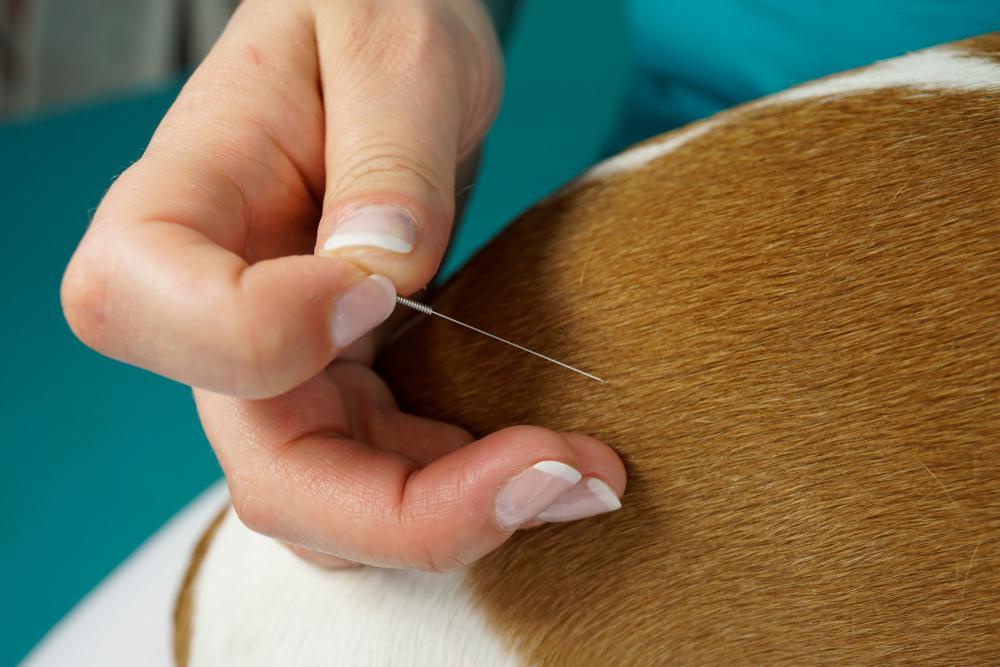
It’s important to note that while acupuncture for dogs can be beneficial for many dogs, it is not a replacement for traditional veterinary care. Always consult with a qualified veterinarian before pursuing acupuncture for your dog. A veterinarian who is trained in veterinary acupuncture or a certified veterinary acupuncturist (CVA) will be able to assess your dog’s condition and determine whether acupuncture is a suitable treatment option.
During an acupuncture session, the dog typically experiences minimal discomfort, and many dogs tolerate the procedure well. The number of sessions required will depend on the dog’s condition and response to treatment. If you are interested in trying acupuncture for your dog, seek a qualified professional who has experience in providing acupuncture for animals and who can ensure the safety and well-being of your pet during the treatment.
If you have any questions acupuncture for dogs or about our Posh Dog Knee Brace you can contact us via our contact form or visit our Facebook Page.
Rehabilitation therapy, also known as physical therapy or physiotherapy for dogs, offers a wide range of benefits that can significantly improve their overall health, mobility, and quality of life. It is especially beneficial for dogs recovering from injuries, surgeries, or managing chronic conditions.
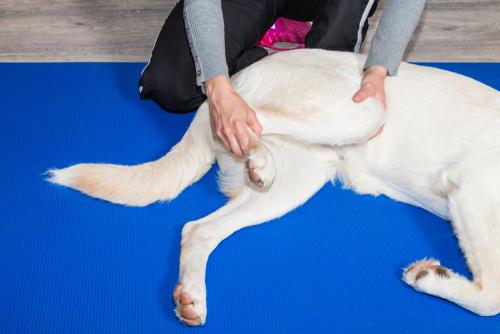
Rehabilitation therapy for dogs is typically provided by licensed veterinary professionals, such as certified canine rehabilitation therapists (CCRT) or veterinarians with specialized training in physical therapy. If you believe your dog could benefit from rehabilitation therapy, consult with your veterinarian to discuss the best options for your dog’s specific condition and needs.
If you are interested in a Posh Dog Knee Brace visit our store page to purchase and if you need more information or would like to keep up to date on new things with Posh Dog Knee Brace visit our Facebook page.
Stretching your dog can indeed help reduce the chance of muscle tears and improve their overall flexibility and mobility. Just like humans, dogs can benefit from regular stretching exercises to keep their muscles and joints supple and healthy. Here are some important points to consider when stretching your dog:
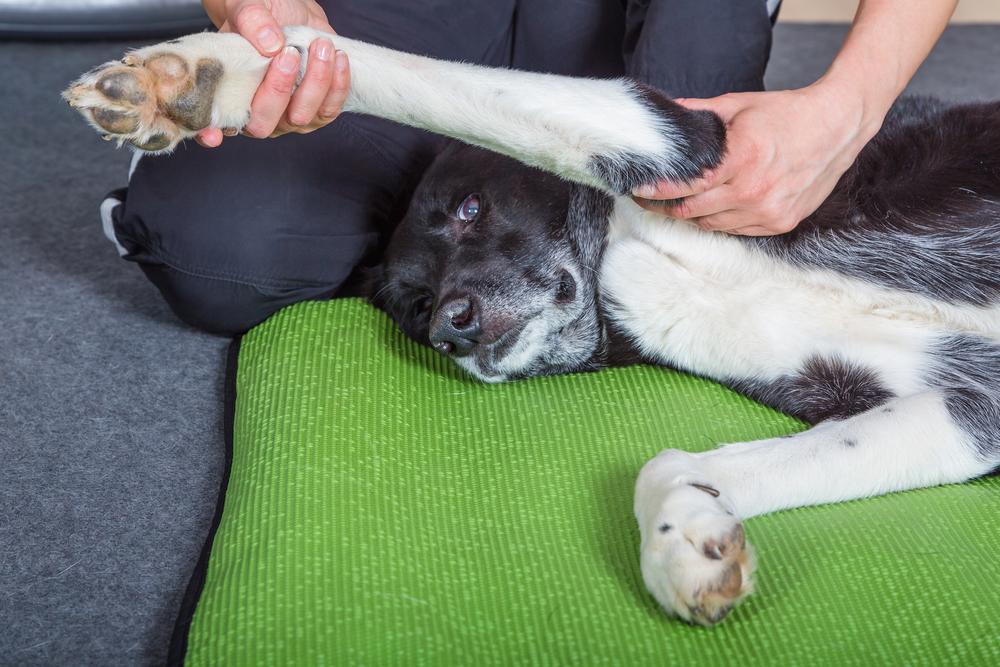
Stretching is just one component of overall canine fitness and injury prevention. Regular exercise, appropriate nutrition, and routine veterinary check-ups are essential for maintaining your dog’s overall health and well-being.
If you need any more information about what exercises you can be se to help your dog with their muscle tears you can contact us via our contact form, or visit our Facebook Page. If you would like to purchase a Posh Dog Knee Brace you can place your order on our store page.
There are many advantages to hand-feed your dog or puppy, and there are only a few circumstances in which it’s not a good idea.
Many dog trainers hand-feed their dogs their meals throughout the day rather than feeding them from a bowl for the most of the day. Every encounter with a dog is a chance to train them. Along with catching your dog in the act of being good, setting aside a portion (or all!) of your dog’s morning and evening meals and hand delivering that food as needed throughout the day will help you increase your rate of reinforcement and create value for the behaviors you want to see more of. A puppy can continuously practice basic behaviors like sit, down, wait, come, and other polite expressions by being hand-fed.
Additionally, hand-feeding for a while can assist raise the dog’s attention on you as the handler by linking you with meals and feeding, which can help dogs who are usually confident but who have many interests, of which you are just one, or dogs who are easily distracted, pay more attention to you.
Hand-feeding can enable you and a new dog or dog and a new person in your life get to know one another.
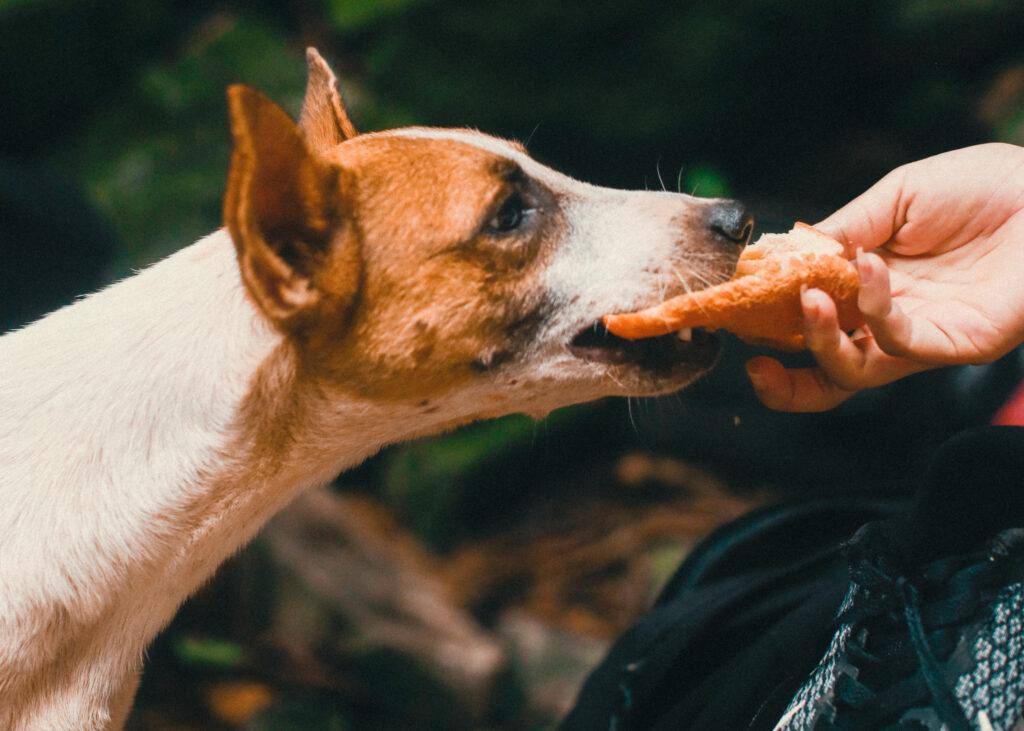
While hand-feeding a dog can help build a relationship with them, it can also increase stress if the dog is extremely timid or scared. Similar to people, some individuals would try to bribe a timid dog with food or treats to make him more comfortable among strangers. However, what frequently occurs (especially with dogs who really enjoy food) is that the allure of the food temporarily overrides their unease about the person – but only for as long as it takes to grab the food. The intention is for the dog to associate the presence of the “scary person” (“Yikes!”) with the presence of the food (“Yum!”).
They immediately realize the “scary person” is too close for comfort once the meal is in their mouth. In this instance, the food serves less as a tool to assist in changing the dog’s relationship and more as a trap.
When dealing with the “strangers are scary” issue, it is preferable for the owner to provide meals while the “scary person” is visible but sufficiently enough away to not raise any serious concerns. If you’re trying to bond with a dog who is really timid, adopt a similar strategy by staying close enough to him so that he identifies your presence with the food, but not so close that it requires a lot of bravery (or desperation) to eat it.
Hand-feeding certain dogs may make them more reckless with food. In an effort to acquire the food, many dogs become too excited and may jump up or lunge at their owners’ hands. Asking your dog to sit while you hold a piece of cheap food in your open palm will assist you teach impulse control in this situation. Try to bring your palm up near your dog. If he approaches the meal, clench your fist and, if necessary, ask him to sit down once more. Use your opposite hand to carry food to your dog’s mouth and command him to “take it!” as soon as he can control himself as your food hand approaches.
For some dogs, “self-control” will look differently. In the beginning, self-control may require a dog who is very excited to maintain a sit position for two seconds with your open hand 12 inches above her head. If your dog has a tendency to leap up on you when you are holding food, tether her with a leash to a solid object and stand just beyond the end of the leash. Your dog will eventually figure out that being patient in the vicinity of the food is the fastest way to receive it.
Try these suggestions if your dog bites down on food from your hand too forcefully.
A dog may become averse to eating from a dish in specific situations if it is fed by hand frequently. A little “tough love” could be necessary in such circumstances. Give your dog five minutes to finish his meal after placing it in a bowl. Attempt again later if he doesn’t, then take up the bowl. When food is present, a healthy dog won’t starve himself, even if using this method necessitates skipping a few meals while he waits to see if you’ll resume hand feeding.
If you are interested in a Posh Dog Knee Brace or have any questions about our braces you can contact via our contact page or visit our Facebook Page for more information.
The health of the dog depends on the owner’s ability to slow the dog’s eating.
Most dogs enjoy eating. Some dogs seem to devour their meal faster than we can blink since they adore it so much! Dogs who consume food too quickly may get sick, especially if they also take in a lot of air and develop the potentially lethal illness known as bloat. Anyone who has had their dog go through this disease understands how crucial it is to train them to eat more slowly.
Some dogs consume food so quickly that their systems can’t keep up with it; the food never even reaches the point of digestion. The end consequence is food regurgitation, which happens when food is ingested and then immediately comes back out of the mouth as a result of the esophagus’ muscles contracting backward. Food was never even consumed by the stomach. In these situations, it is advised to reduce the dog’s food intake.
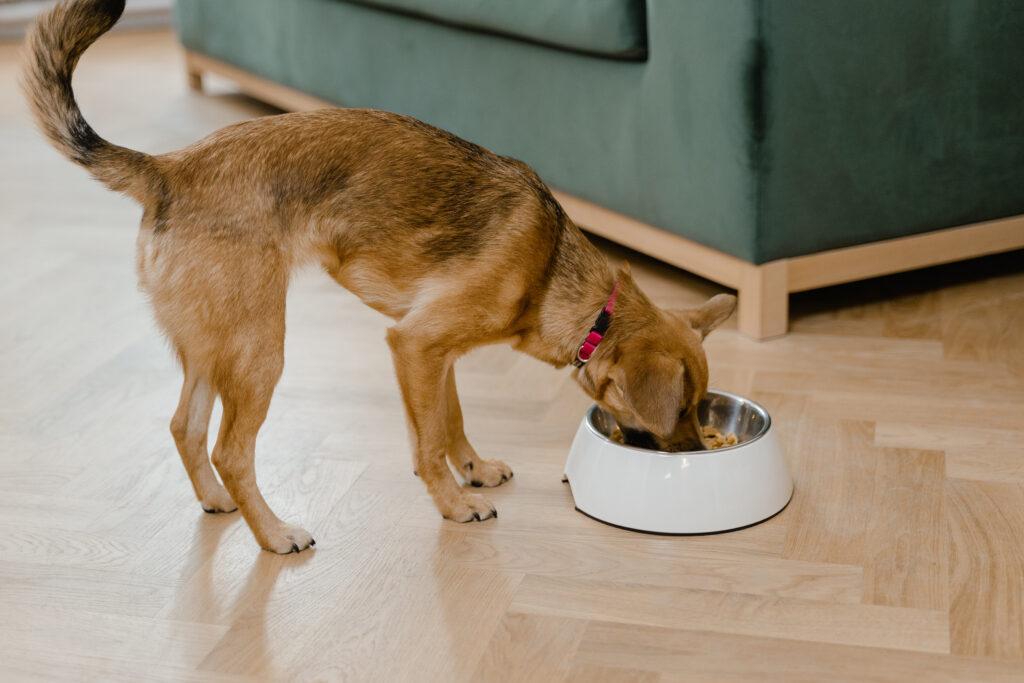
Consult your dog’s veterinarian if you’ve tried these remedies and your dog is still vomiting or regurgitating food to rule out a more serious problem.
You can always reach us on our contact page or check out our Facebook Page for information on our brace and more.
When traveling in your car with your dog, restrain him with a safety harness and seat belt, or confine him to a properly secured crate. Also, avoid letting your dog sit on your lap or drive with his head out the window.
Most of us enjoy traveling with our dogs. And in most cases, this entails transporting them in our car, truck, or SUV. Yet, poor driving habits can turn a simple journey into a trip that changes your life. Both canine and human passengers must adhere to good driving safety. Dogs injured in cars due to poor safety precautions are a common occurrence among emergency veterinarians. This applies to situations where passengers are not properly restrained, such as sitting on the driver’s lap or sticking their heads out the window.
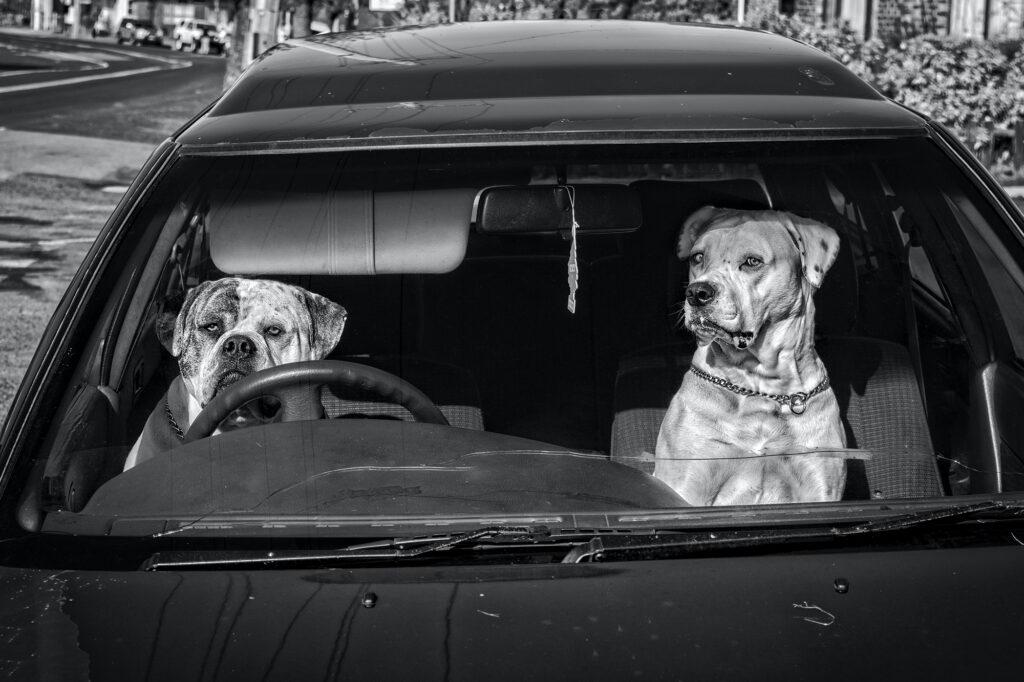
It is really alluring to drive with your small dog on your lap. They are adorable and enjoy cuddling. And what possible harm might your six-pound Maltese or Chihuahua cause by riding in your lap?
Your airbag is likely to deploy if you are in an accident. The airbag is designed to keep you safe in a collision. As the airbag inflates, if your small dog is sitting on your lap, the force of the airbag could seriously hurt it. Little dogs hit by an airbag frequently sustain fractures and spinal cord trauma that causes paralysis.
In a car accident, unrestrained dogs can potentially become projectiles. Being catapulted into the windshield and suffering a head injury is typical. Little dogs being catapulted out of the driver’s side window during an accident is another frequent occurrence seen by emergency vets. This occurs when the tiny dog is seated in the driver’s lap with their paws on the door and the driver’s window is down. In the event of an accident, the small dog may fly out the window and strike the pavement below, landing on its head. Traumatic brain injury or sudden deaths are frequent outcomes of this kind of injury.
The best way to transport a dog safely in a car is in a secured travel container made specifically for use in cars or airplanes, or harnessed into a dog car safety belt or harness. Tiny dogs can travel in a car seat made for dogs as long as they are restrained with a safety harness.
Big dogs frequently ride in the rear seat, away from air bags, but they still run the risk of getting hurt if a window is left open. As a result of flying objects, dogs who ride with their heads out the window are more likely to sustain eye and/or ear problems. Unrestrained dogs jumping out the window of a moving car are another frequent injury. When they fall on the pavement, these canines could break a limb. Also, owners have been known to mistakenly run their own dogs over after the animal jumped out the back window, according to emergency vets!
When the windows are rolled down in your automobile, installing a dog window guard or screen on each rear window can assist safeguard your dog. There are wire mesh panels made of welded steel that are specifically manufactured to fit your car’s rear windows. There are available screens made of polyester mesh cloth. When installed, each of these screens and panels enables regular window functioning in your car.
Accidents can occur when we least anticipate them. Don’t allow poor driving practices disrupt your outing!
You can always contact us about our Posh Dog Knee Brace or any other supplements for you dog by our contact page or visit our Facebook Page as well.
Hey guys, Nikki with posh dog knee braces here. So, first of all I can’t stress enough the need to do some form of physical therapy. We send every patient home with a 12 week recovery calendar and exercises, however, we need you to keep those up for the full 9 months. Whether you find a holistic or physical therapy clinic to help you with water treadmill or PT, you need to keep you dog active in some way.
Lack of activity will cause a joint to “lock up” after the scar tissue has formed, meaning there is not going to be the same amount of range of motion there. There also can be loss of muscle. The brace alone is not enough to build muscle, you will need to keep walking your dog, and doing some form of exercise program. This is needed whether you do surgery, Conservative management, or bracing. Doing nothing will result in loss of muscle, loss of range of motion, and most likely arthritis and pain down the road.
We have a lovely list of holistic veterinarians and rehab clinics around the US and in Canada, so reach out if you are struggling to find a clinic. The clinics on our list are partners with posh, and know how to treat our patients, as well as measure and fit the brace if needed. We do have some things we can have you do from home as well, if PT is just not in the budget. I am happy with walks, simple exercises, and passive range of motion.
What is PROM? This is you gently bending and flexing the knee, as well as the hip. I have videos we send to you on how to do this stretching, but this is key to keep flexibility in the joint, and not end up with lack of movement there.
Please let us know if you have any questions, poshdogkneebrace.com or visit our Facebook Page. Thanks!
Hey guys, this is Nikki Lead Veterinary technician with posh. Today let’s talk about dog treats. I have so many clients that are taking charge of what their dog is eating, and I want to elaborate a bit on that. In my other blog, we discussed the importance of finding a food that is without corn, wheat, and soy, and finding a good protein as the first ingredient. Some will even go as far as raw feeding, and that is great for those that have the time!
So, you have done all this research, found a dog food that fits your dog’s healthy lifestyle, but they are still showing signs of skin issues, obesity, and inflammation? This means it is time to find out exactly what goes into your dog’s mouth each day, you will actually be surprised how many treats and things your dog actually gets per day.
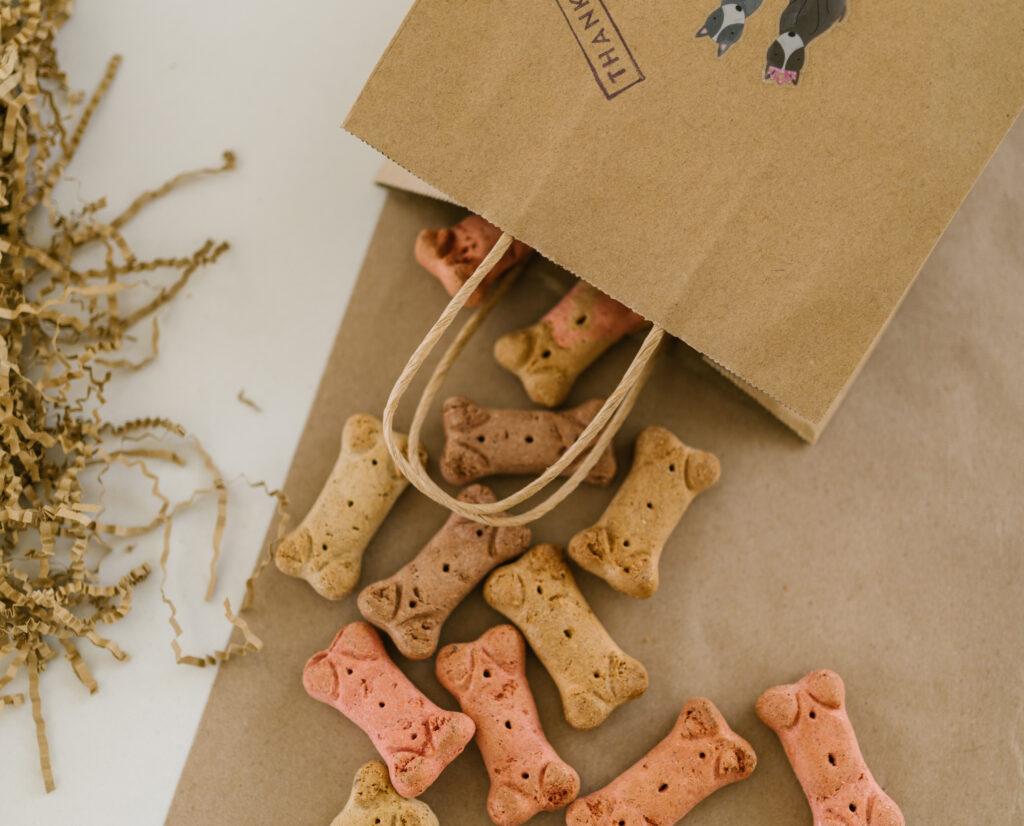
First off, start by placing a treat inside a bag for every treat you give your dog. If you give them a milk bone for example, you put one into the bag as well. At the end of the day, take note of what you gave your dog, plus what treats you used.
You will be amazed how many people don’t think about dog treats, and are spending literally hundreds of dollars every month on good quality dog food. Yet, after just one milk bone, you have basically undone all of the good you were doing. Did you know the main ingredient in common dog treats is wheat? That is the first ingredient. The second is some kind of by product, then corn, and so on.
Do you see the problem? Dog’s can’t digest wheat and corn well, and they can cause all sorts of issues with their digestive system. So, please stop giving milk bones to your dog if they have any injuries, itchy skin, or you are trying to get them to loose weight.
Now I am not telling you to stop giving dog treats, not at all! My sweet girl gets her treats daily, but we give her healthy treats, and are more aware of what she gets. Probiotic treats are great! My all time favorite is freeze dried treats. They are a bit more costly than milk bones, but only have one ingredient! Beef liver, or chicken, lamb, even bison if your dog is food protein sensitive.
So, please look into freeze dried treats, sweet potato, cooked vegetables, or some cooked chicken instead of grabbing those milk bones! Please let me know if you have any other questions! You can reach me at poshintake1@gmail.com , poshdogkneebrace.com or visit our Facebook Page.
Hey guys, this is Nikki Lead Veterinary Technician with Posh Dog Knee Braces. Today, let’s talk about Cranial Cruciate Ligament Repair (CCL/ACL) tears in a dog, and what your options are. First of all, if your dog is limping on the hind leg, be sure to get a diagnosis from your veterinarian before making any decisions. Once that takes place, be firm with your Veterinarian if needed and ask for the exact diagnosis. If they feel that your dog has a Cranial Cruciate Ligament tear, or CCL tear, then you do have some decisions to make moving forward. Let’s go into the options, and the pros and cons, as well as long term expectations.
First off, depending on your veterinarian, they may refer you to a specialist to verify the diagnosis. This is completely up to you, but do know that if you go to a specialist, they are typically surgeons, and will not be happy without scheduling your dog for surgery. Please know that you can say no. I can’t stress enough how important it is for you to take a breath, and go over all options before signing that dotted line.
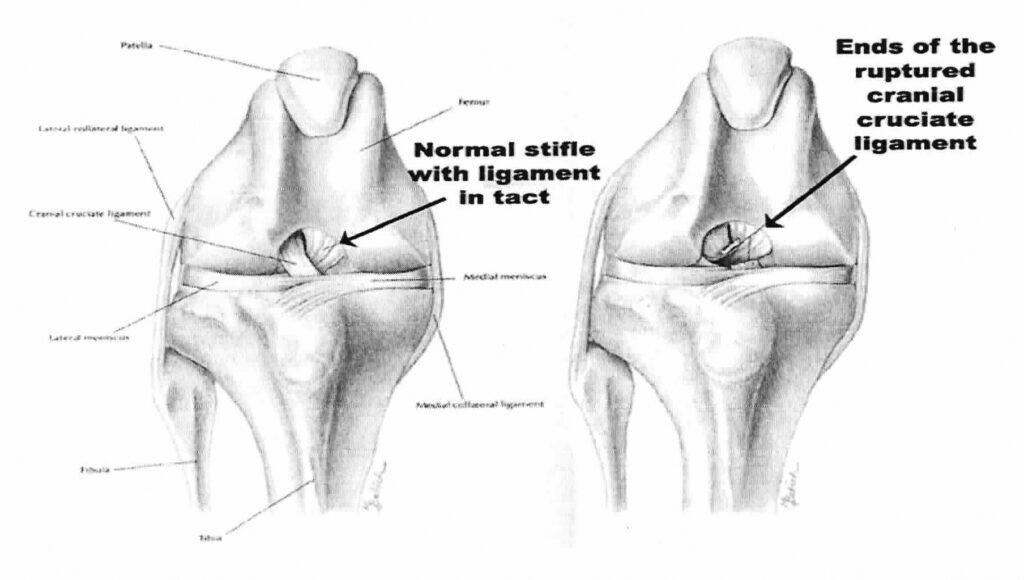
Choosing to do just conservative management, with no support or surgery. This seems to be gaining momentum and popularity, because obviously options can cost money. There are supportive things to do, such as keeping your dog in a kennel, leash walks outside, supplements, acupuncture, laser, prp, ect. While this option is better for the budget, it is not for the busy owner, or owners with small children and other pets. While it sounds great, reality is that there is a great chance your pup will continue to re-injure their knee. At some point, the door will open, and your dog will want to run.
Someone will forget, your dog looks like he is dong better at 3 months, and in he comes with the leg hiked all the way up to the groin. Sound familiar? This can be a tough cycle, and the bones in the knee are still able to move, causing pressure on the meniscus as well increasing your dog’s chance of arthritis down the road. So, can a knee heal with conservative management alone? Possibly, but there could be long term issues if you do not do passive range of motion, PT, and exercising along with CM alone.
This is by far my favorite option, from years of experience working with orthopedics. Using an orthotic Brace in conjunction with PROM and PT, as well as supplements and support. Now I am not talking about the cheap over the counter neoprene braces that have a spiderweb of straps connecting to the harness or back, those are no better than just letting the knee recover alone.
I am talking about a custom made premium orthotic brace, such as the Posh Dog Knee Brace. Posh Brace fully stabilizes the knee, allowing for range of motion and squatting, while also acting as a shock absorber for the meniscus. This is going to help give a smoother recovery, and allow that scar tissue to form without a lot of re-injuries. Thus, this is one of the safer options, and definitely still less than surgery.
Tightrope, lateral suture, or extracapsular repair. This is the cheapest of the surgical options, and should only be used on patients under 30-40lbs, as the suture has double the chance of failing in larger breed patients. This method usually is in the $2k-$3k ballpark range now, and is literally using fishing line/or suture to wrap around the knee joint to keep things in place. There are several ways this can and usually does fail. The crimps can come off, the suture can break, the suture can slip, ect.
These patients are immobile for months, and do get a lot of atrophy in the joint. This seems to be sore to recover from, and without a brace post op, your dog is going to need to be kenneled for weeks to months, to allow for scar tissue to properly form. This technique is similar to if you braced, however, without the full stabilization and support, and double the cost.
TPLO or TTA surgery. Both of these will be suggested by your vet or surgeon, usually first. They both entail cutting of the tibia bone, and re-alignment using a plate and screws. This is permanent, and there is no going back if something doesn’t go the way it was meant to. I always save this for my last option, as it is extremely invasive, expensive, and does not give a guarantee of working. Too many patients have had lifelong lameness due to choosing this option, and are not able to recover fully.
There are many weeks needed for kenneling, so the leg will atrophy. This also causes overcompensating on the good knee, which again increases the chances of another CCL tear in that leg. If surgery does go well, and you are able to do a full Physical Therapy Program post op with a professional, your dog may have a good outcome, but this is not without risk.
Please email me at poshintake1@gmail.com if you would like to ask more questions about Cranial Cruciate Ligament Repair, CCL/ACL tears in dogs, and what the best options are for your pup. You can also contact via our forms or visit our Facebook page.
How to exercise your dog using our brace. Hey guys, this is Nikki Lead Veterinary Technician with Posh Dog Knee Braces,we are going to talk about excerises for your dog. Today let’s talk about how to keep your injured dog active using our brace and how to exercise with it. As you know, after surgery there is several weeks that you would need to have your dog kenneled with no exercising, leading to atrophy of the muscles and overcompensating on the other joints. With our brace, patients are able to fully weight bear and start walks right away, decreasing the chances for overcompensating.
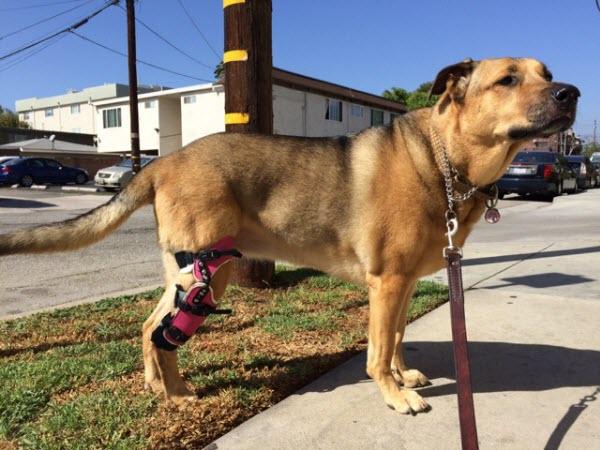
Just like us, we want to start out slowly, so as not to over-use those muscles that have been unused since the onset of the injury. I suggest starting out with no more than 2 fifteen minute walks per day for excerising, and gradually increasing the amount of walking each week by about 10-15 minutes, as the patient starts getting stronger. Each patient is different in the amount you are able to start walks, and there may be some initial soreness for the first 2 weeks. This will go away as we start gaining muscle back.
Once our patients are able to walk comfortably for at least 20-30 minutes, after a few weeks, we can start encouraging things like swimming, hills, beach walking, and curbwork for exercises. Swimming can be at a physical therapy clinic, swimming pool, or a beach. Just no jumping into the water and climbing yet. Short hills and small hikes are great tools to keep those muscles working out.
We do offer a 12 week physical therapy program with each of our patients, which includes stretches and different exercises, such as figure 8’s, curb work, walks, hydrotherapy, ect. It is important to keep up with passive range of motion as you work into more activities, to prevent soreness and stiffness in the muscles and joints. As we are developing scar tissue, we want to keep up with gentle movements in the knee. This is important to help the development of healthy scar tissues.
After a few months, gentle trots and increased activities will be ok, as long as the patient is supervised. As we start to approach the 6-9 month mark, there should be more and more stability to the joint, even without the brace on. As the knee begins to stabilize, we can do more and more activities. We still need to refrain from excessive running, jumping, twisting, or playing fetch until things are fully recovered. This is usually after about 12 months. Always ask our technicians if you have any questions on activities planned.
For more information about how to exercise your dog you can contact through our contact form or visit or Facebook Page.
Signs your dog is in pain. The idea is to be aware of your dog’s typical movement and react swiftly to any abnormalities.
Mental alarms may be triggered by your energetic dog limping or moving in an unnatural manner. A sprain, perhaps? A strained muscle perhaps a strained ligament or tendon what should you do in response to this?
You should first determine whether the aberration is a short-term or long-term symptom.
An acute injury is one that manifests abruptly, typically 24 to 48 hours after the initial trauma. Sprains, falls, accidents, and other impacts can cause acute injuries, which are characterized by sharp, immediate pain, soreness, redness, swelling, warm-to-the-touch skin, and inflammation.
In contrast, chronic injuries take longer to manifest, get better and worse, and result in persistent soreness or dull pain. Overuse, arthritis, and acute injuries that were never appropriately treated are the typical causes of chronic injuries.
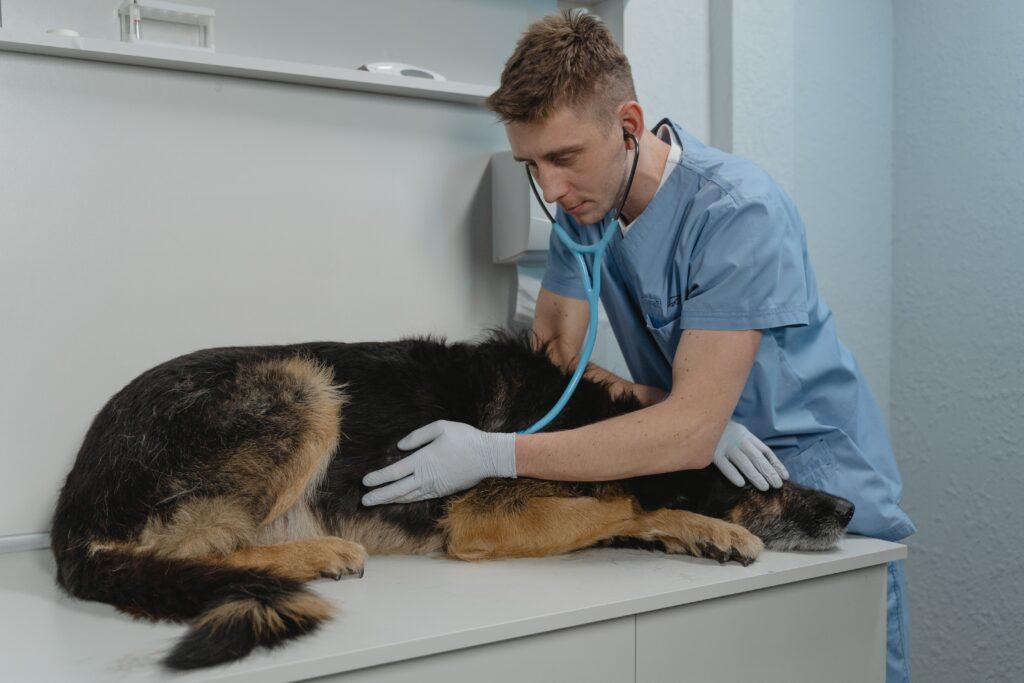
Sometimes a dog’s injury is visible because they are limping, howling in pain, or are unable to move. But paying attention to your dog’s movement and demeanor is time well spent because spotting mild indications can help prevent more serious issues. These are some examples of pain and stress signals:
The majority of canine injuries are chronic rather than acute. Chronic injuries are caused by overuse, excessive motion, and wear and tear. Every dog is susceptible to injuries, but some are more vulnerable than others, such as dogs that are overweight, weekend athletes, couch potatoes, elderly dogs, dogs with arthritis, dogs used in search and rescue, and canine athletics (such as dogs competing in fly ball, agility, freestyle, disc dog, hunting, field work, dock diving, obedience, weight pulling, dog sledding, and other active sports).
Rest is the number one suggestion for canine wounds. In particular, if the damage involves ligaments or tendons, which lack a blood supply that provides healing nutrients to the injury site, both visible injuries and subtle micro tears require time to heal. As soon as even little symptoms appear, it’s crucial to cease trekking, running, playing, or competing.
Check your dog’s nails, paw pads, and fur if he becomes abruptly lame, bleeds, or compulsively licks a paw, advises Dr. Davis. It’s common to see grass awns embedded in the skin between the toes. The pads are frequently affected by cuts, stingers, or foreign objects and a ripped nail can be painful.
If the injury is serious, take your dog right away to the vet; however, if it’s only minor or a visit to the clinic isn’t feasible, take your dog home and confine him to a quiet place. Write down any changes you observe, beginning with the day and hour you first noticed the issue and a description of what your dog was doing at the time. Your veterinarian or other therapist will be able to recognize and treat the injury with the aid of an accurate history of symptoms and treatments.
Range-of-motion exercises, such coaxing your dog with a food or toy into a turn to the right or left or raising and lowering his head, can help you record symptoms. Additionally, daily massage and tender touch reveal hints. When you pet or press your dog’s shoulder or hindquarters, does she turn away? Is there somewhere on your body that seems especially heated, hard, stiff, sensitive, or swollen? One of the quickest methods to find inflammation, muscle strains, and other discomforts is through touch.
Rest, ice, and massage are effective treatments for many minor and severe muscle, tendon, and ligament injuries. “Going outside on a leash to relieve itself counts as resting your pet; walks, treks, running, jumping, climbing stairs, or playing with other animals do not. Visit your veterinarian for a precise diagnosis if, after a few days, your pet has not improved, does not get better, or continues to display the same symptoms.
For severe injuries, cold is advised since it lessens discomfort and swelling. Dogs who are hurt instinctively look for places to stand or lie down, such as puddles, ponds, streams, and snow banks.
It is untrue for a bag of frozen peas to work as an efficient ice pack. The peas don’t remain cold for long enough to be useful. Pet supply shops have cold therapy items for animals, while businesses that sell medical supplies also sell cold packs for sports injuries. The finest cold packs have a gel inside that doesn’t harden when frozen, allowing you to shape them to a dog’s body.
Make your own cold packs by combining two cups of water, one and a half cups of isopropyl (rubbing) alcohol, and two tablespoons of salt in a self-sealing plastic bag. Double-bag the bag to ensure a tight closure.
Any open ice pack should be covered with a towel before application, removed after 10 to 15 minutes, and left off for at least two hours before reapplying because cold limits circulation and ice left on for too long might result in difficulties. Never use cold treatments right before working out, practicing, or competing.
Put two cups of uncooked rice in a sock, tie the top, and microwave for one minute to create your own warm pack. It will continue to be warm for 20 minutes. For additional relaxation, add a sprig of lavender or a drop of essential oil. The sock can be utilized repeatedly. If you don’t have a microwave, put the raw rice in a cookie sheet and preheat the oven to 150°F for 5 to 7 minutes.
Then, pour the warm rice into a sock or pouch, make sure it’s a safe temperature before applying, and check to make sure it’s still warm enough. As an alternative, soak a towel in warm water, wring it out thoroughly, and apply to the affected region. As required, reheat.
Whenever utilizing a warm pack, never leave a dog alone. To ensure the optimum temperature, always place a towel between the pack and your skin.
The fundamentals of massage are simple to master, and the majority of dogs like to be touched, stretched, and caressed. Restoring range of motion, calming the patient, and repairing injured tissue are all benefits of massage therapy. Hire a professional dog massage therapist, or study the foundations in books or on videos.
Chiropractic adjustments restore proper joint and vertebral alignment to alleviate pain, lessen muscular spasms, enhance coordination, and improve general health.
Musculoskeletal issues like arthritis, disc diseases, stiffness, and lameness can be improved or treated by acupuncture. It’s near relative, acupressure, involves pressing on acupressure points without using needles. Gent finger pressure or small, counterclockwise or clockwise-moving circles can be used to accomplish this.
Veterinarians and canine rehabilitation therapists provide a range of treatments for wounds, including hydrotherapy, shock wave therapy, therapeutic exercise, therapeutic ultrasound, therapeutic laser, PEMF therapy, cryo therapy, orthotics and braces, electrical stimulation, herbal remedies, and energy healing modalities like Reiki.
Without first visiting your veterinarian, avoid giving your dog any over-the-counter medications. Numerous human drugs “may not be taken by your pet” or “may produce undesirable reactions with your dog’s other meds.”
Even if your dog appears to be in good health and reacts well to pain medication, follow your vet’s advice to rest and only engage in light exercise while the injury heals.
Helping your dog avoid damage by taking precautions takes time and effort, but it’s time well spent.
Preventing obesity is a crucial objective. Carrying too much weight puts too much strain on the muscles, tendons, and ligaments. “Obesity is also an inflammatory condition. Degenerative joint disease and a variety of other problems throughout the body can be brought on by chronic inflammation. Reduce the amount of treats your overweight dog receives during training and forbid family members from giving her more. It takes a village to lose weight successfully in dogs.
Similar to humans, pets benefit from having a strong core to lessen stress on the spine and limbs. Regular conditioning should be a lifelong objective for your dog. Your dog need not be an athlete to train like one. There are several online athletic and conditioning communities, and your neighborhood kennel club might know of them.
Avoiding repeatedly doing the same movements is another protective measure. Tennis ball throwing may be your dog’s favorite exercise, but repetitive ball throwing can lead to injuries, so mix it up with other hobbies.
Keep toenails short because overgrown toenails alter the biomechanics of the toes, which affects the alignment and mobility of the legs and spine.
Be practical while planning your dog’s schedule. Sprains and strains are brought on by abruptly changing from couch potato to canine athlete. For ambitious games of fetch, trail runs, and other “too much fun” occasions, inactive dogs require time and progressively increasing activity. And if your dog is hurt, have patience. Keep in mind that one of your dogs strongest heals is time.
If your dog is in need of a knee brace or elbow brace due to injury you can order your brace today via our shopping page, if you have any further questions about what you should do you can contact us via our contact form, or visit our Facebook page or Group page for more information.
The majority of dog owners are aware that socializing a dog is best done when the dog is still a puppy. Between the ages of three and twelve weeks, a dog is most sensitive and receptive, thus the earlier you can socialize your dog, the better. After twelve weeks, a puppy may be quite resistant to anything new or unfamiliar.
Unfortunately, socializing a dog well during this window isn’t always possible. Perhaps as a young puppy, your dog suffered from a serious illness, and your veterinarian advised keeping them inside and away from other dogs. Or maybe you found them later in life and they simply never had a good chance to meet people.
Whatever the reason, your dog doesn’t have to live a life without companions or the opportunity to freely play with others because they weren’t socialized as a puppy. Here is some advice on how to socialize your dog:
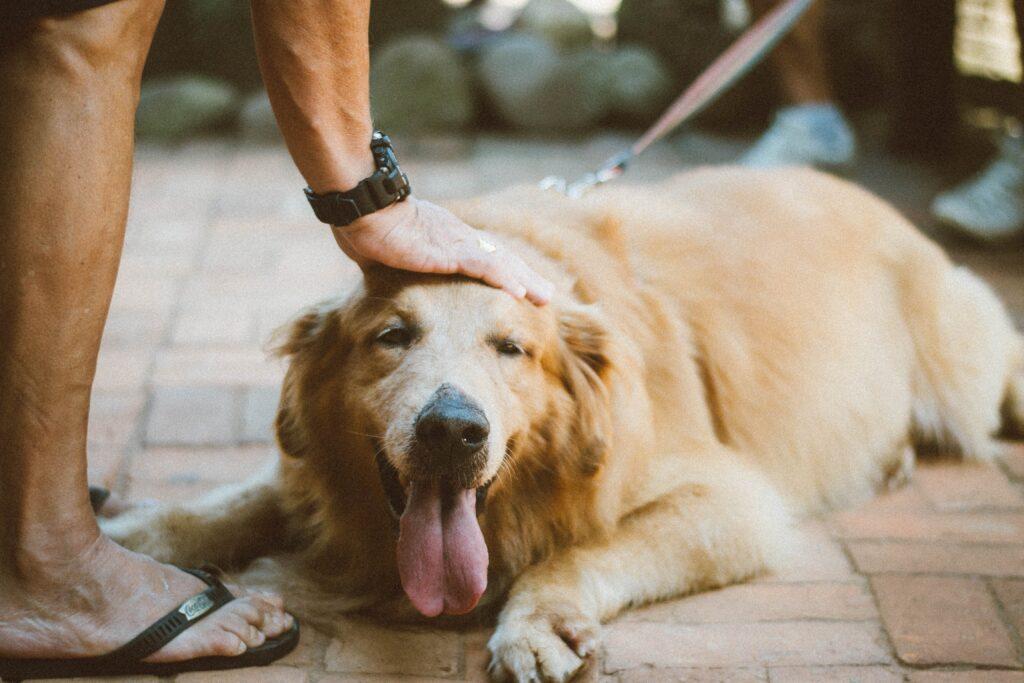
Dog walks are fantastic ways for your dog to observe and maybe interact with other dogs and humans while also practicing polite conduct in public.
Why? Well, for one thing, because going for a stroll will always put you in more social circumstances than staying at home. However, walks are also great for socializing dogs because they will be calmer and more obedient because they will have less pent-up energy as a result of the exercise.
Remember not to yell at your dog or pull back on the leash if they bark or otherwise act out because this will just make them more excited, make the experience unpleasant, and teach them to associate that enthusiasm with other dogs.
Instead, keep your energy calm and assertive while distracting them with a reprimand, such as a sound you’ve trained them to respond to, a fast tug of the leash in a sideways direction, or a touch. You can always peacefully leave if all else fails.
If you are aware that your dog barks or growls at other dogs, wearing a muzzle can make things easier.
Of course, this eliminates the possibility of biting or attacking, but it may also reduce tension between the dogs, allowing for a more enjoyable meeting encounter.
Don’t rush things, but if you can get your dog involved in one new activity per week, it will help them socialize and stay calm and well-behaved. This can be accomplished by using a leash and muzzle, as well as by initially training your dog to be an observer.
For instance, you may gradually introduce your unsocialized dog to dog parks by strolling them around the perimeter of the fence and letting them observe the dogs having fun instead of just bringing them in and hoping for the best.
Socialize your dog doesn’t have to be something that you struggle through on your own, you can always reach out to a dog trainer for additional help.
Let Your Dog Recover With Our Custom Dog Knee Brace!
We’ve Helped Thousands Of Dogs, Now We Want To Help Yours…
The Posh Dog Knee Brace is a 100% custom Dog knee brace, hand made only for your Dog. We make our custom brace with no casting. Our state-of-the-art brace for Dogs is very durable, waterproof, sand proof, and easily adjustable by customers. Our Veterinary Technicians provide personal live video supervision of measuring, and fitting of your Dog ACL brace in the comfort of your own home.
If you are interested in our product you can check out our shopping page, if you would like to join our Facebook click here.
You must socialize your dog with people if you want him to be hospitable to both friends and family. Here are some pointers for socializing your dog with others.
Congratulations! You’ve just added a new dog or puppy to your home, and both he and you are adjusting to life together rapidly. It’s possible that you didn’t consider how much or even how to socialize your new dog or puppy when you were adopting them. You must introduce your dog to new people if you want him to be hospitable to both friends and relatives.
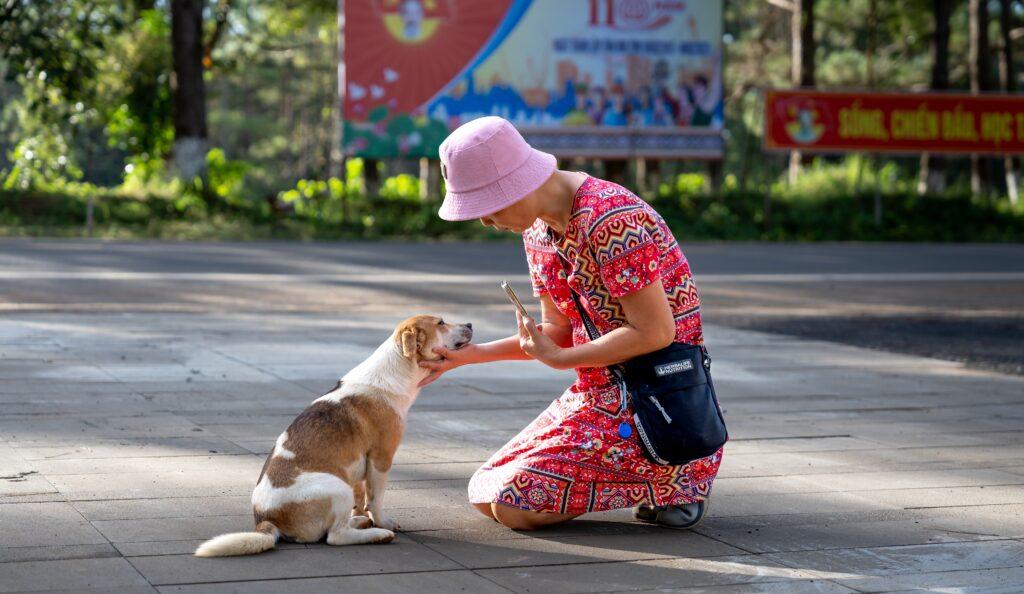
A major deal—for everyone—is introducing your significant other to the family. It’s quite different when you socialize your dog to your significant other. Regardless of how hostile your family may be against a new spouse, at least they won’t bite, right?
It’s been “the two of you” when you share your life with your dog prior to welcoming a new person. Your dog will be used to being the “top dog,” so when you bring home a significant other, he can feel displaced and not be happy about it.
You can do the following things to make the introductions go more smoothly:
There’s a good possibility you won’t have time to set up these “neutral ground” conversations if you’re throwing a party or hosting houseguests. Your visitors should be aware that they are entering your dog’s domain and that it can take the dog some time to get used to them. These folks are strangers to your dog, so you should introduce them to him the same way you would any stranger. These first socialize interaction must be watched over and conducted as calmly as possible.
You can introduce your dog to home guests in the following ways:
You must maintain command of the circumstance. Keep your dog on a leash if you know he will become aggressive against outsiders who invade his domain or if you are unsure of his reaction. Allow visitors to enter, and once they are inside, let your dog start the introduction.
Allow your dog to greet your guests while keeping him on a short leash. Allow your guests to give him a tiny present if you are confident that he will accept it well. This serves to further solidify the association between stranger and treatment. Give your dog a treat when he behaves well and is calm.
Use the commands “sit,” “down,” or “stay” if your dog has been taught them when guests arrive at your home.
You should greet visitors first so that your dog can observe your interactions. Your dog will detect the pleasant interaction, will notice that you’re relaxed, and that might encourage him to relax, whether you shake their hands or embrace them.
Inform your visitors if your dog jumps. Inform your visitors that if your dog jumps on them, they should turn their backs to the dog and place their arms across their chests. Ask them to refrain from addressing your dog by name or even from saying “down.” The fact that they are turning away will deter the dog from jumping because he is not being petted and is being ignored.
You could choose to let your dog off his leash once the visitors have entered your home and he seems at ease with them being there. Keep an eye on his level of tension and provide your visitors with advice on how to speak with him.
Extreme caution must be used whenever children are present, whether you are bringing a new baby home, hosting visitors with children, or running into kids on the street.
Children squeal, run around, and sometimes yank the dog’s fur or unintentionally step on its paws or tail. A youngster running around may in some cases and with some breeds trigger the dog’s predatory instinct, which can have catastrophic results. Avoid interacting with dogs you don’t know too much. If you have children and are adopting a dog for your family, do your research to make sure the dog is “kid friendly.”
Here are some pointers to socialize your dog to kids in a secure way:
You, the pet parent, must pay attention to your dog and his body language if you want to foster positive connections between your dog or puppy and visitors to your home, people you meet on the street, or if you’re bringing home a new, little human. When he feels at ease, move cautiously. When your dog shows signs of anxiety, you should go more slowly or remove him from the environment and try again later.
Dogs strive to win over their owners. They might take some time to warm up to a stranger, but with time and encouragement, your dog and the people in your life will develop a close friendship that will last a lifetime.
If you are interested in any of our products please check out our store page and if you would like to join our Facebook page click here.
It’s time to focus once more on the chocolate in your home with Valentine’s Day quickly approaching. After all, it’s customary to receive chocolate during this time of year that you would not often have on hand, and this can easily turn into an alluring treat for your family’s pets.
It’s crucial to keep in mind, though, how poisonous chocolate may be for dogs. Although chocolate toxicity in dogs or cats may not always result in death, it can be extremely harmful and may also result in long-term health issues.
To learn more about what to watch out for this Valentine’s Day and whenever you have chocolate in your house, read the information below.
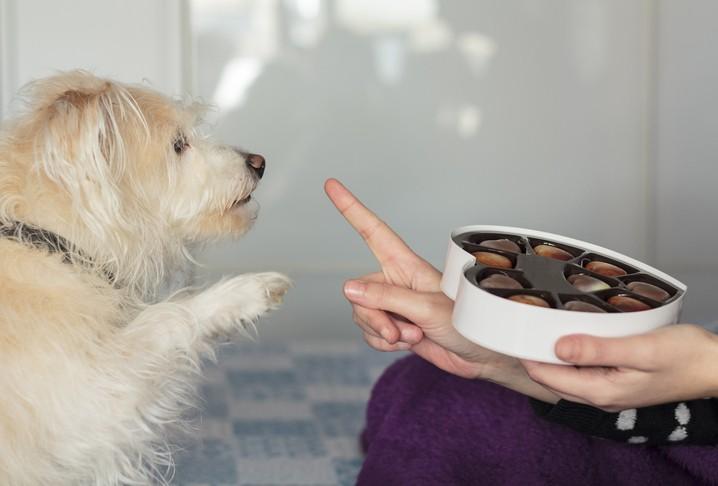
Chocolate is toxic to dogs for two reasons:
The first of these is that chocolate contains caffeine. While certain varieties of chocolate have more caffeine than others, all varieties of chocolate do. Caffeine can make your dog’s heart beat too quickly, which could have major negative health effects. The same logic applies to the argument against allowing dogs to consume coffee.
Theobromine is another component of chocolate that can be poisonous to dogs. This substance can act as a diuretic and behaves similarly to caffeine. Your dog may quickly get dehydrated as a result of this, which could cause other issues.
It’s crucial to keep in mind that a chocolate’s toxicity increases with how bitter it tastes. This indicates that white chocolate is less likely to be harmful than dark baking chocolate, which is particularly poisonous. Do not give your dog any chocolate, even if you believe it is not too bitter, as all varieties of chocolate can be toxic and hazardous to dogs and other pets.
Now that you are aware of the reasons why chocolate is harmful to dogs, it is critical to know how to spot the signs of chocolate poisoning in your pet.
Intoxication symptoms in dogs from chocolate include:
The two issues listed above are the first indications that dogs are poisonous to chocolate. In minor situations, dogs may merely vomit or have a few episodes of diarrhea before feeling better.
However, in extreme circumstances, these symptoms may worsen and eventually lead to the other conditions on the list below.
Dogs who have consumed too much theobromine or caffeine may exhibit increased thirst and urine. This is because theobromine and caffeine are both diuretics.
Particularly caffeine may make dogs act agitatedly. Even without the dog consuming much of it, darker chocolates with higher caffeine concentrations may cause this symptom.
A worrisome sign that might cause cardiac arrest is an increased heart rate, especially in older or sicker dogs. It may be advised to take your pet to the emergency vet for monitoring and/or treatment since it can be challenging to monitor your pet’s heart rate at home.
One of the worst signs of dog’s excessive chocolate poisoning is seizures. This may only happen if a dog consumes a significant amount of chocolate, but it occasionally indicates that the toxicity will become fatal without veterinary care.
If your dog exhibits this symptom after consuming chocolate, take him to the clinic right away.
Depending on the signs your dog exhibits after consuming chocolate, you may need to take different actions.
If you are aware that your pet has had chocolate, call the emergency veterinarian as soon as possible. Depending on the type of chocolate consumed and the size of your pet, clinical symptoms and issues can differ greatly. Your pet may occasionally be made to vomit the chocolate up by the vet in an effort to prevent or decrease the possibility of developing clinical symptoms.
Do not wait for symptoms to appear before contacting your veterinarian; once symptoms appear, treatment becomes much more challenging.
Please take your pet to the emergency vet if he exhibits any of the signs on this list and you are certain that he has consumed chocolate. Dehydration can occur quickly as a result of excessive thirst and urine, which can be very dangerous for dogs.
The more quickly you react to your dog’s alarming symptoms, the more probable it is that your dog will be able to fully recover from the situation.
There are numerous ways to protect your dog at home and avoid chocolate toxicity:
If you keep chocolate of any kind in your home, you should always be aware of how you’re storing it and how probable it is that you’re pet will try to get to it. Whether you have brownies, cookies, milk chocolate bars, or cocoa powder in your kitchen or pantry, they should always be kept in a secure location that your pet can’t access.
Avoid leaving chocolate goodies or wrappers lying around by keeping cabinets and pantry doors closed whenever you can.
Additionally, it’s crucial to teach your pet the “leave it” command to stop them from grabbing objects—either food or inedible—that they shouldn’t. Early training of your dog in good manners and obedience can prevent a lot of hassle later on for both you and them.
Children are renowned for giving pets gifts. Get kids in the habit of putting things away in their right places and teach them not to offer your dog any chocolate or other goodies.
Make sure kids develop the habit of immediately closing the fridge, cupboards, and drawers after usage.
Cocoa shell mulch is a rare but potentially harmful source of chocolate poisoning in dogs. The mulch, which is frequently used as a top covering for plants, can entice dogs with its sweet perfume, causing them to consume some of the mulch, which can lead to disease.
Cocoa shell mulch should never be used for landscaping.
With the use of this knowledge, you ought to be able to protect your dogs at Valentine’s Day and any other time of the year when there is chocolate present. Keep any domestic pets under close observation and store chocolate securely out of their reach. You can avoid this potentially deadly issue altogether if you take this action. Call an emergency veterinarian straight once if you know or suspect that your dog has consumed chocolate.
If you would like to learn more about our tips and tricks you can visit our blog page for you can check out our Facebook Page. If you are interested in purchasing one of our Posh Dog Knee Brace you can click our shop page.